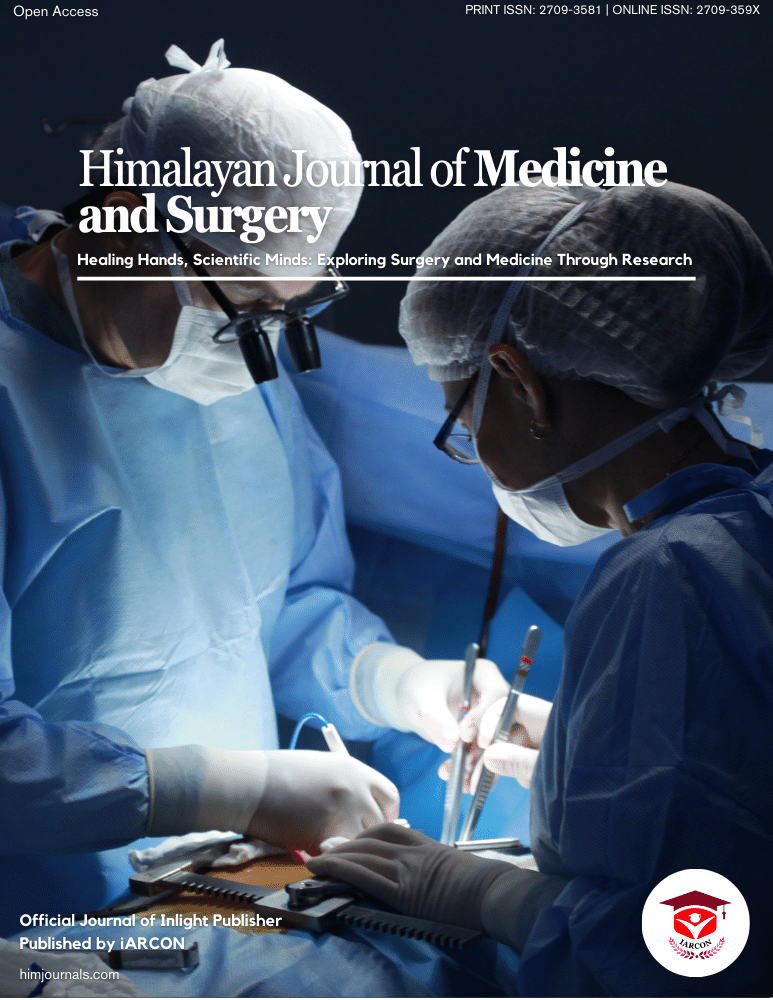Research Approach: Descriptive
Study Design: Cross Section Hospital based study design
Setting of the Study: GMC Jammu
Study Duration: Between June- October 2021
Study Population: Doctors working in surgical specialties and super-specialties
Sample Size
A total of 100 doctors including Professors, Associate professors, Assistant Professers, resistrars, Senior and Junior Residents and medical officers working in surgical specialties and super-specialties like Surgery, Neurosurgery, Gynecology, Orthopedics, Eye and ENT, Urology, Cardiology etc. were participated:
Sampling Technique: Random sampling technique
Sampling Criteria: Everyday 2-3 doctors working in surgical specialties and super-specialties were selected randomly till the completion of sample size after explaining the purpose of the study. Informed consent/assent was taken from them and confidentiality of the selected participants was also maintained
Inclusive Criteria
Doctors working in surgical specialties and super-specialties of GMC Jammu and were present during the day of data collection and were willing to participate in the study.
Exclusion Criteria
Doctors who were not willing to participate in the study.
Development of Tool
Self-administered, pre-tested, semi-structured questionnaire having knowledge, Attitude and Practices related questions.
Description of Tool:
Section A: Socio-demographic characteristics of the Doctors (age, gender, level of training, specialty, designation and duration of services etc.)
Sections B-Contained: Knowledge, Attitude and Practices related questions
Knowledge
These sections contained 10 structured knowledge questions regarding SAP having four options. The participants have to choose right one. One mark was given for each correct answer and zero for incorrect answer. The maximum score was 10 and minimum score was zero. Scoring was done on the basis of marks as:
>80%(9-10)=very good,60-79%(6-8) =Good,41-59% (4-8)=Fair,<40%(< 4)=poor
Attitude: These sections evaluated doctor’s attitude towards national SAP guidelines There were 10 questions of Attitude having the 5 points rating scale as Strongly Agree, Agree, Neutral, Disagree, Strongly Disagree and it consists of total 50 marks. There were positive and negative statements. Positive statements were scored 5,4,3,2,1 and negative statements were scored 1,2,3,4,5 respectively Scoring was done on the basis of marks as:
>80%(40-50)=very good,60-79%(30-39)=Good,41-59%(20-29) =Fair,<40%(<20) =poor
Practices
This sections contained adherence of doctors towards different SAP practices. There were 10 structured practices questionnaire having options of Yes or No. The participants have to choose right one. One mark was given for each correct Practice and zero for incorrect practices. The maximum score was 10 and minimum score was zero. Scoring was done on the basis of marks as:
>80%(9-10)=very good,60-79%(6-8) =Good,41-59% (4-8)=Fair,<40%(< 4)=poor
Data collection by myself and each participants was given 10-15 minutes time to complete that questionnaire and collected at the end of the prescribed time.
Data analysis with appropriate statistical test in terms of frequencies and percentage.


